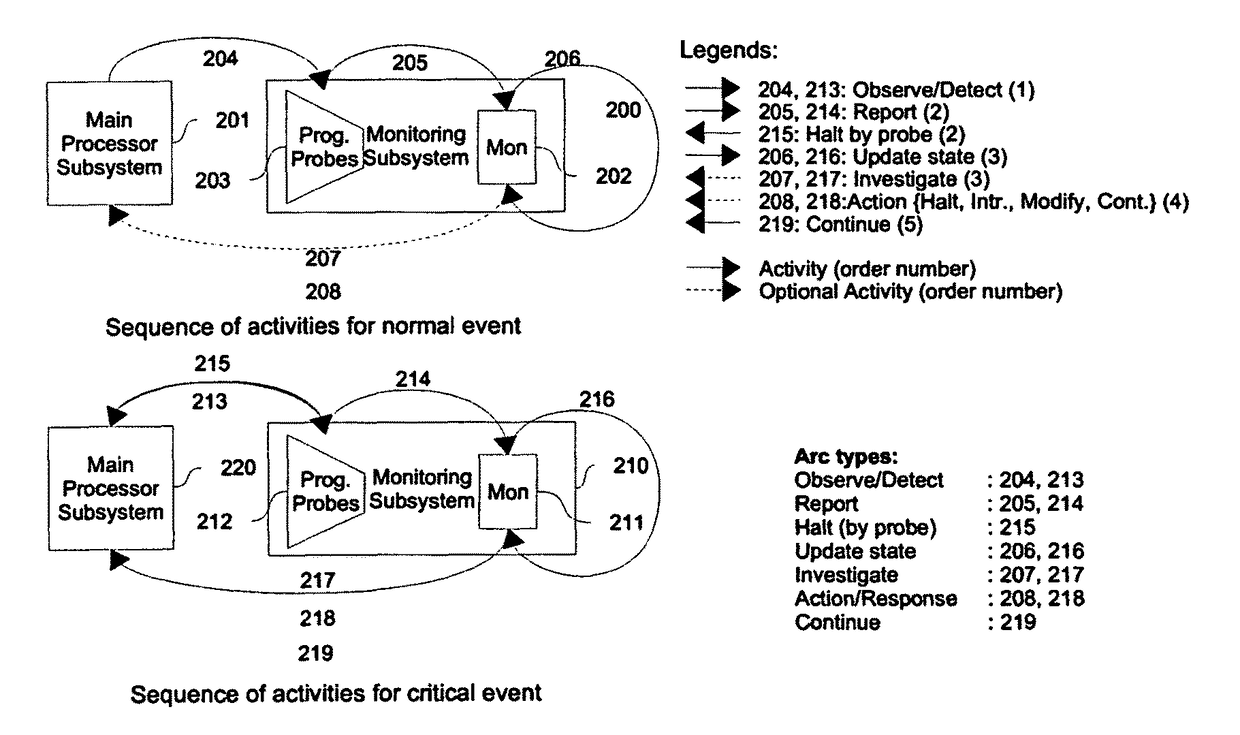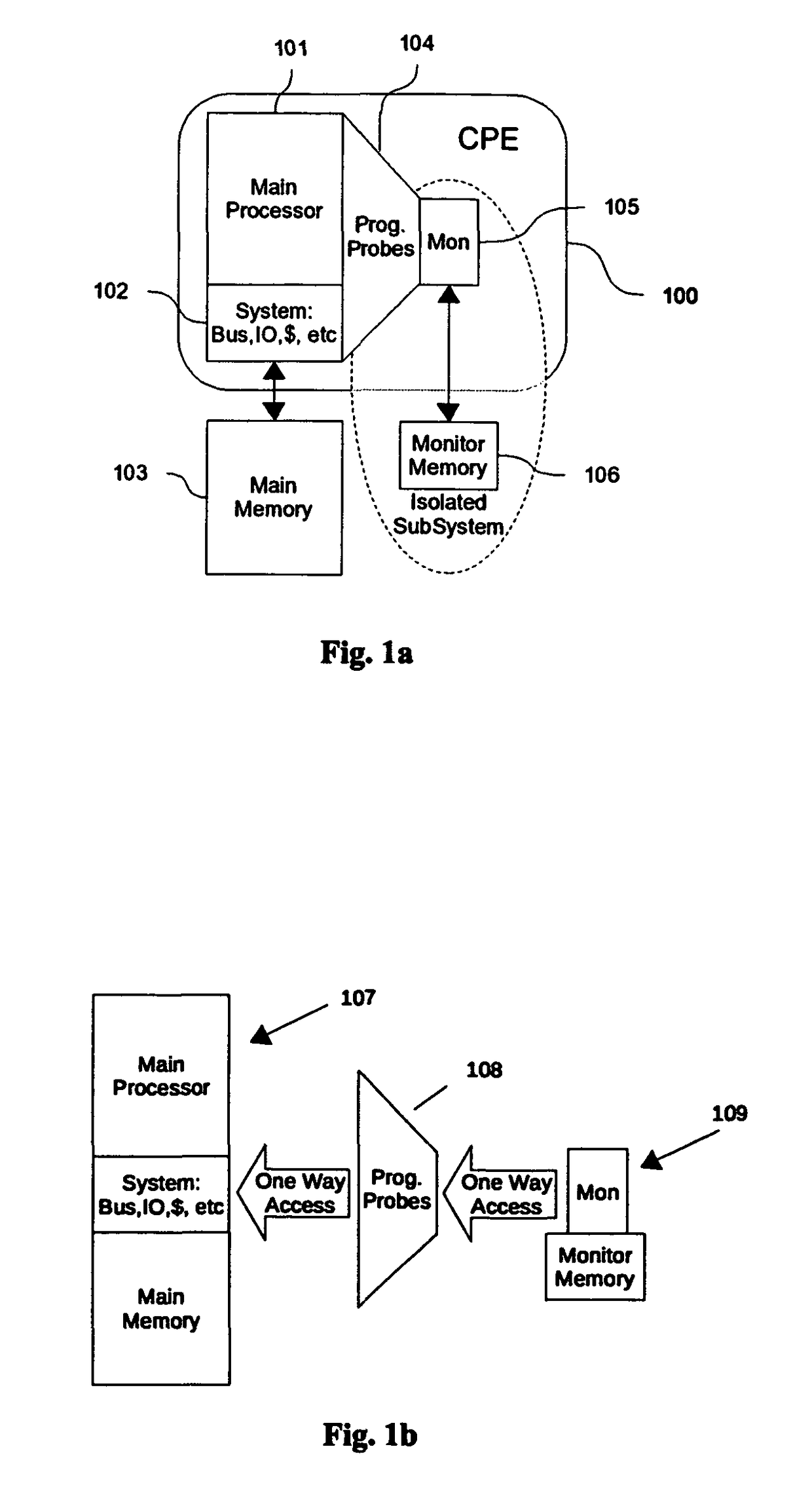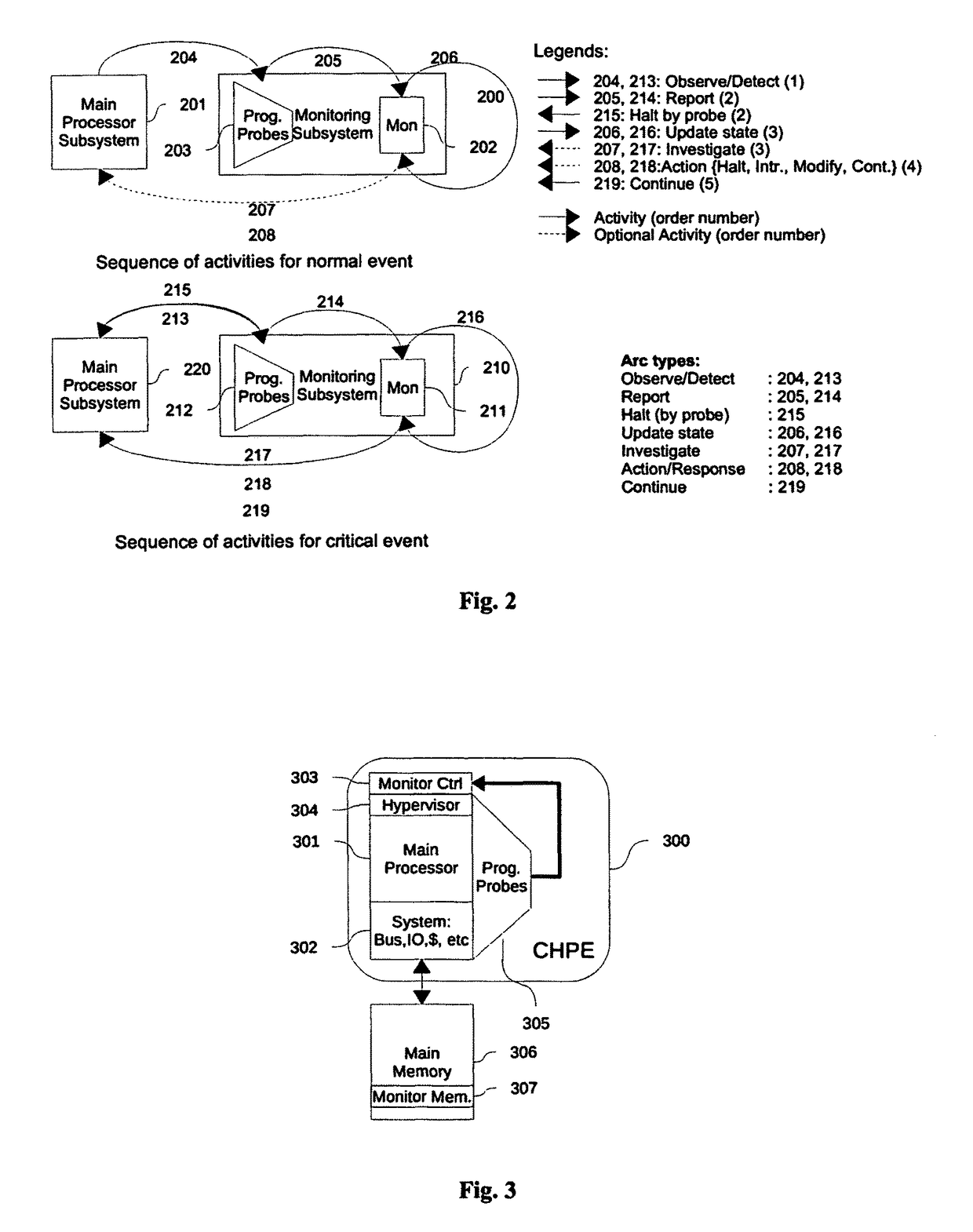Cognizant engines: systems and methods for enabling program observability and controlability at instruction level granularity
a technology of cognitive engines and instruction level, applied in the field of real-time monitoring of the state and behavior of computer programs, can solve the problems of piracy and exploitation of central database servers and critical information systems, the susceptibility of technology to over-the-wire or insider attacks to the protecting functions of the kernel themselves, and achieve the effect of less efficient and high performan
- Summary
- Abstract
- Description
- Claims
- Application Information
AI Technical Summary
Benefits of technology
Problems solved by technology
Method used
Image
Examples
Embodiment Construction
[0048]A preferred embodiment of Cognizant processing engine, consist of a processor 626, instrumented with programmable probes 611, and 612, and equipped with a monitor core 613, which may be a simple processor, a micro controller, or a programmable hardware state machine. CPE can be constructed by instrumenting selected general purpose main processor such as x86, SPARC, MIPS, etc, with a set of programmable probes, and by adding a programmable state machine or a simple embedded core such as ARM, NIOS, MicroBlaze, ARC, etc., or any 16 bit or 32 bit micro-controller, to act as the monitor for the probes. The monitoring processor may run in much slower, at a fraction of the main processor's clock speed. The programmable probes operate at the clock speed of the main processor.
[0049]FIG. 6. shows a preferred embodiment of cognizant processing engine. In the preferred embodiment of FIG. 6, the monitoring core 612 is connected to the programmable probes 611 and the programmable probe reso...
PUM
 Login to View More
Login to View More Abstract
Description
Claims
Application Information
 Login to View More
Login to View More - R&D
- Intellectual Property
- Life Sciences
- Materials
- Tech Scout
- Unparalleled Data Quality
- Higher Quality Content
- 60% Fewer Hallucinations
Browse by: Latest US Patents, China's latest patents, Technical Efficacy Thesaurus, Application Domain, Technology Topic, Popular Technical Reports.
© 2025 PatSnap. All rights reserved.Legal|Privacy policy|Modern Slavery Act Transparency Statement|Sitemap|About US| Contact US: help@patsnap.com



